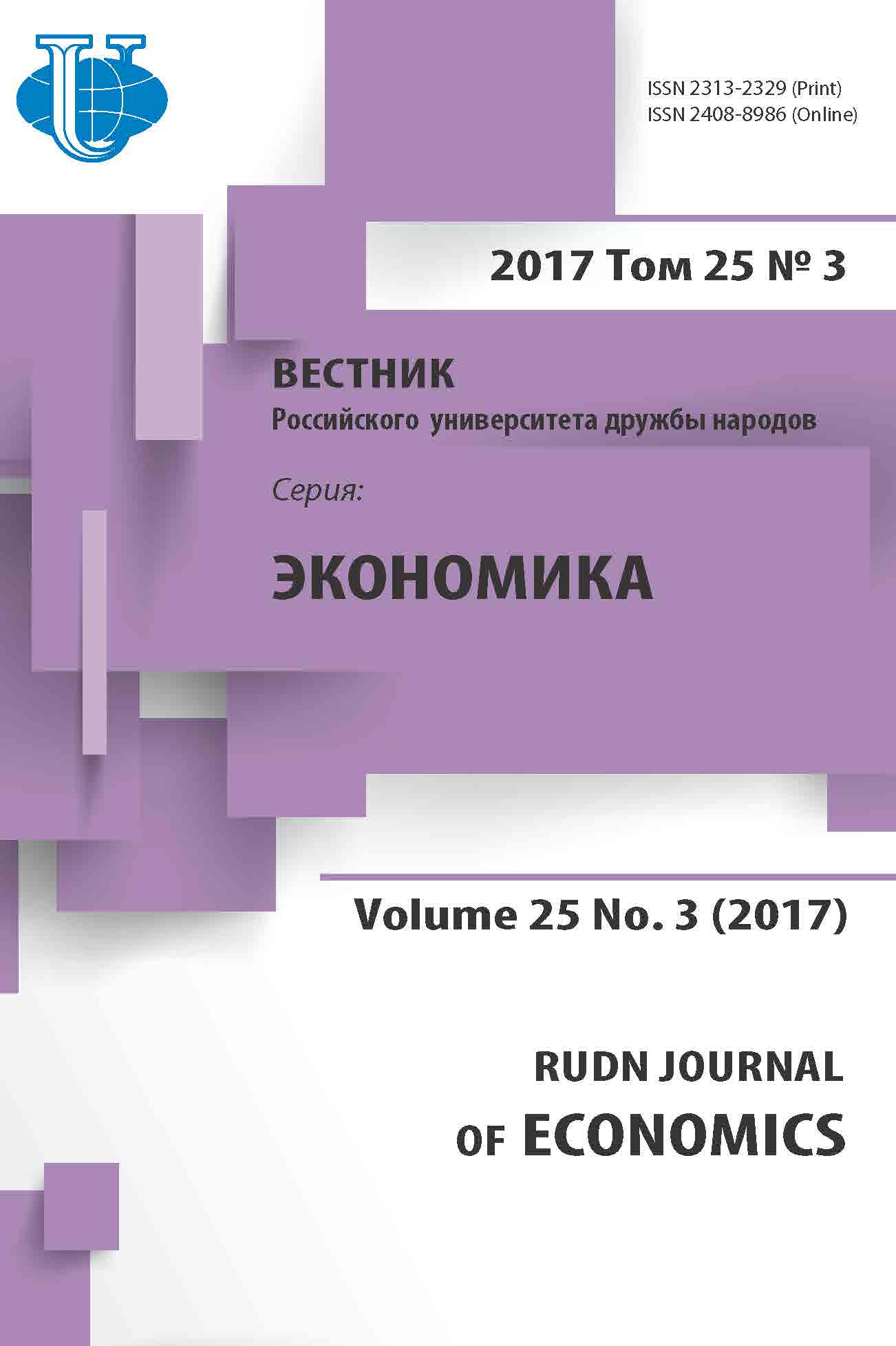THE ESTIMATION OF POSSIBLE SOCIO-ECONOMIC CONSEQUENCES OF NUCLEAR POWER STATION BUILDING IN VIETNAM PROVINCE NINTHUAN
- Authors: Borzunova TI1, Maksimova AS2, Morozova GF1
-
Affiliations:
- Institute for Socio-Political Studies of the Russian Academy of Sciences
- Leninskie Gory, 1, Moscow, Russia, 119991
- Issue: Vol 25, No 3 (2017)
- Pages: 381-392
- Section: Articles
- URL: https://journals.rudn.ru/economics/article/view/17769
- DOI: https://doi.org/10.22363/2313-2329-2017-25-3-381-392
Cite item
Full Text
Abstract
World experience has the examples of the giant impact of the nuclear power plants construction on the socio-demographic situation of the construction territories. The article considers the directions of influence of the nuclear energy object - nuclear power plants on the socio-demographic situation in the region of construction. There evaluated possible effects of the construction and using of the nuclear power station in Ninh Thuan-1 on the demographic situation in the area, the labor market and social infrastructure. The impact assessment of the nuclear programs is likely to have been produced on the socio-demographic situation in the region by several components and based on the experience of already operating nuclear power plants in China, Ukraine, Russia and Belarus. The main trends and direction of influence have been established. In the area of construction of nuclear power plants, first of all, the geography of administrative and territorial division changes: the satellite cities are built, the urbanization increases. The population structure transforms: age structure both of employment at the plant, and population of satellite cities, is shifted towards younger ages, which suggests a high birth rate, low mortality rate and demographic pressure “from below”, without the one from above. The intensification of migration is observed not only due to the migrants, who comes for the construction and to work in nuclear power plant, but also due to the relocation of the population from the sanitary protection zone. The changes exist also in the labor market: there is demand for highly specialized skilled workers, which leads to targeted training and increases the level of education of the population of the region. In addition, the jobs are created for servicing the employees of atomic object, including through building social infrastructure and public catering enterprises.
About the authors
T I Borzunova
Institute for Socio-Political Studies of the Russian Academy of Sciences
Author for correspondence.
Email: dema1@mail.ru
Borzunova T.I. Cand. Econ. Sci., Senior Researcher of the Center for Social Demography of the Institute for Socio-Political Research of the Russian Academy of Sciences.
Fotievoy str., 6, building 1, Moscow, Russia, 119333A S Maksimova
Leninskie Gory, 1, Moscow, Russia, 119991
Email: lubijizn@yandex.ru
Maksimova A.S. Cand. Econ. Sci., Science Worker of the Department of Demography, The Higher School of Modern Social Sciences (Faculty), Moscow State University.
ул. Ленинские Горы, 1, Москва, Россия, 119991G F Morozova
Institute for Socio-Political Studies of the Russian Academy of Sciences
Email: gmoroz46@mail.ru
Morozova G.F. Cand. Econ. Sci., Leading Researcher of the Center for Social Demography of the Institute for Socio-Political Research of the Russian Academy of Sciences.
Fotievoy str., 6, building 1, Moscow, Russia, 119333References
- Berdugin S.A., Makarov E.B. (2006) Professionalnoye obuchenie personala filiala koncerna “RosEnergoAtom” “Balakovskaya atomnaya stanciya”). Vestnik SGTU. № 4 (20). Vol. 5. P. 190—196 (In Russ).
- Elohin A.P., Ksenofontov A.I., Alalem E.A. Fedorov P.I. (2016). Analiz osnovnyh harakteristik rajona razmeshcheniya proektiruemoj v Iordanii aehs globalnaya yadernaya bezopasnost. Globalnayayadernaya-bezopasnost. 2 (19). Pp. 7—15. (In Russ).
- Informatcionniy resurs Hartyiya’97. Gorod-atomschic Ostrovec “perestroyili” pod rossiiskih specialistov. URL: https://charter97.org/ru/news/2017/9/11/262566/ (accessed: 20.06.2017) (In Russ).
- Concern RosEnergoAtom. URL: http://rosenergoatom.ru (accessed: 19.08.2017) (In Russ).
- Lyaginskaya A.M., Tukov A.R., Osipov V.A., Ermalitskiy A.P., Prokhorova O.P. (2009) Vrozhdennye poroki razvitiya u potomstva likvidatorov posledstvij avarii na chernobylskoj aehs radiacionnaya biologiya radioehkologiya. Radiatsionnaya biologiya. Radioekologiya. 49 (6). Pp. 694—702 (in Russian).
- Ngo Thi Tuet Hong. (2017) Rossiya peredaet samuyu sovremennuyu yadernuyu tehnologiyu Vietnamy. Nauchniy aspect. 2017. № 1. V. 1—2. P. 160—170 (In Russ).
- Rosatom. Retrieved from: www.rosatom.ru/journalist/news/rosatom-i-ministerstvo-nauki-itekhnologiy-vetnama-podpisali-memorandum-o-vzaimoponimanii-po-sooruzh/ (accessed: 01.06.2017) (In Russ).
- Sanitarnuye pravila proektirovaniya I ekspluatacii atomnyh electrostanciy SP AES -79. Institute biofiziki Ministerstva zdravoohraneniya SSSR (Sanutary rules of projecting and using the nuclear power station SP NPS-79) The Institute of Biophysics of Ministry of Health of USSR. М.: Energoizdat, 1981. (In Russ).
- Statistical Commette of Vietnam. Retrieved from: http://www.gso.gov.vn/default_en.aspx?tabid=774 (accessed: 01.06.2017) (In Eng)
- Le Thi Kim Dung (2010) An Overview on Site Selection for the first NPP in Vietnam//Report on IAEA Technical Meeting Topical Issues on Infrastructure Development: Common Challenges on Site Selection for NPP Programme. Vienna, 06-09 July 2010. URL: https://www.iaea.org/ NuclearPower/Downloads/Infrastructure/meetings/2010-06-TM/Vietnam_LeThiKimDung.pdf (accessed: 01.07.2017).
- United Nations, Department of Economic and Social Affairs, Population Division (2014). World Urbanization Prospects: The 2014 Revision. URL: www.esa.un.org (accessed: 20.06.2017).
- Vietnam Construction. URL: http://vietnamconstruction.vn/en/nuclear-power-plant-awaits-greenlight/ (accessed: 24.05.2017).
- World Nuclear Association. URL: http://www.world-nuclear.org/information-library/country-profiles/ countries-t-z/vietnam.aspx (accessed: 15.05.2017).















